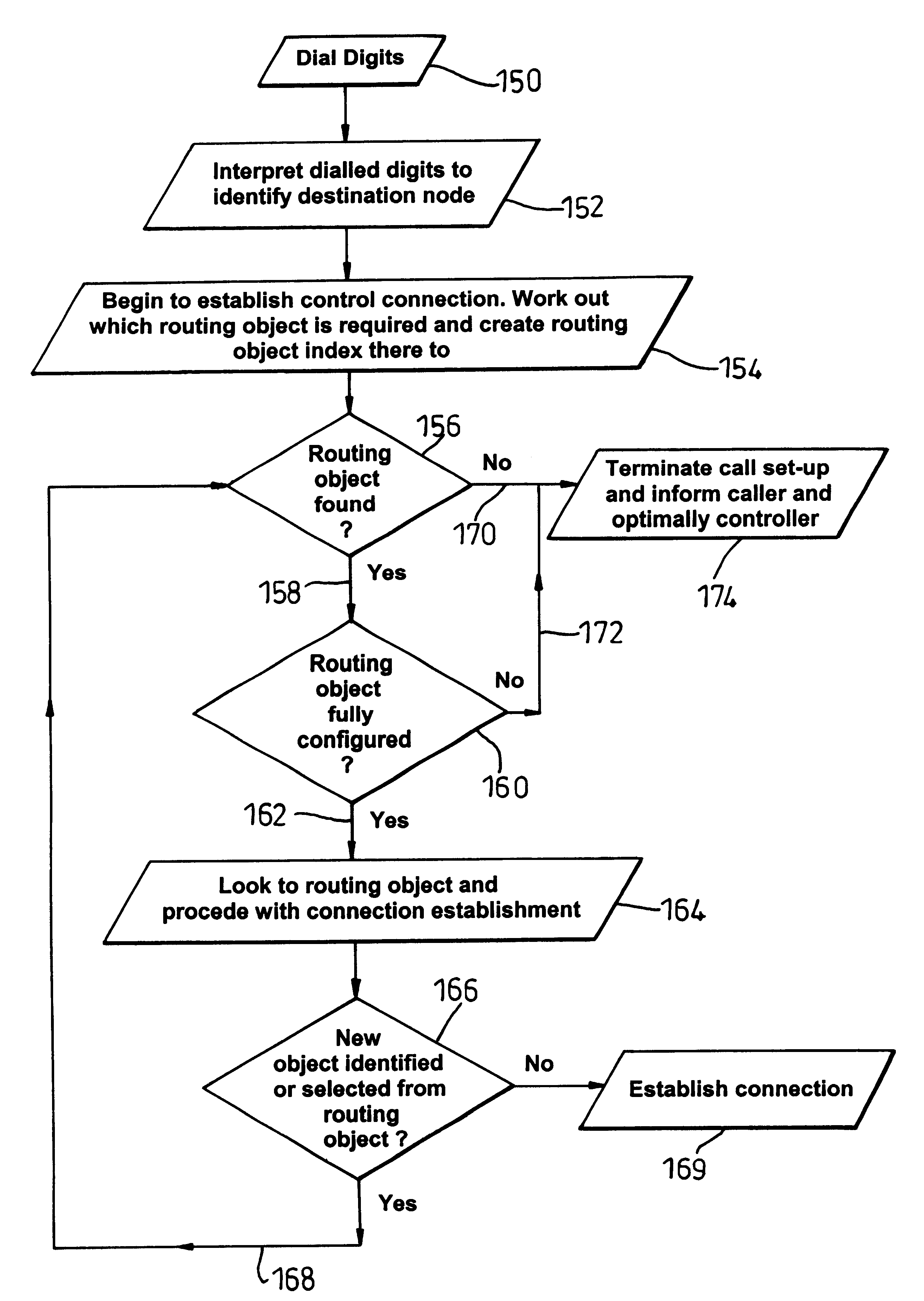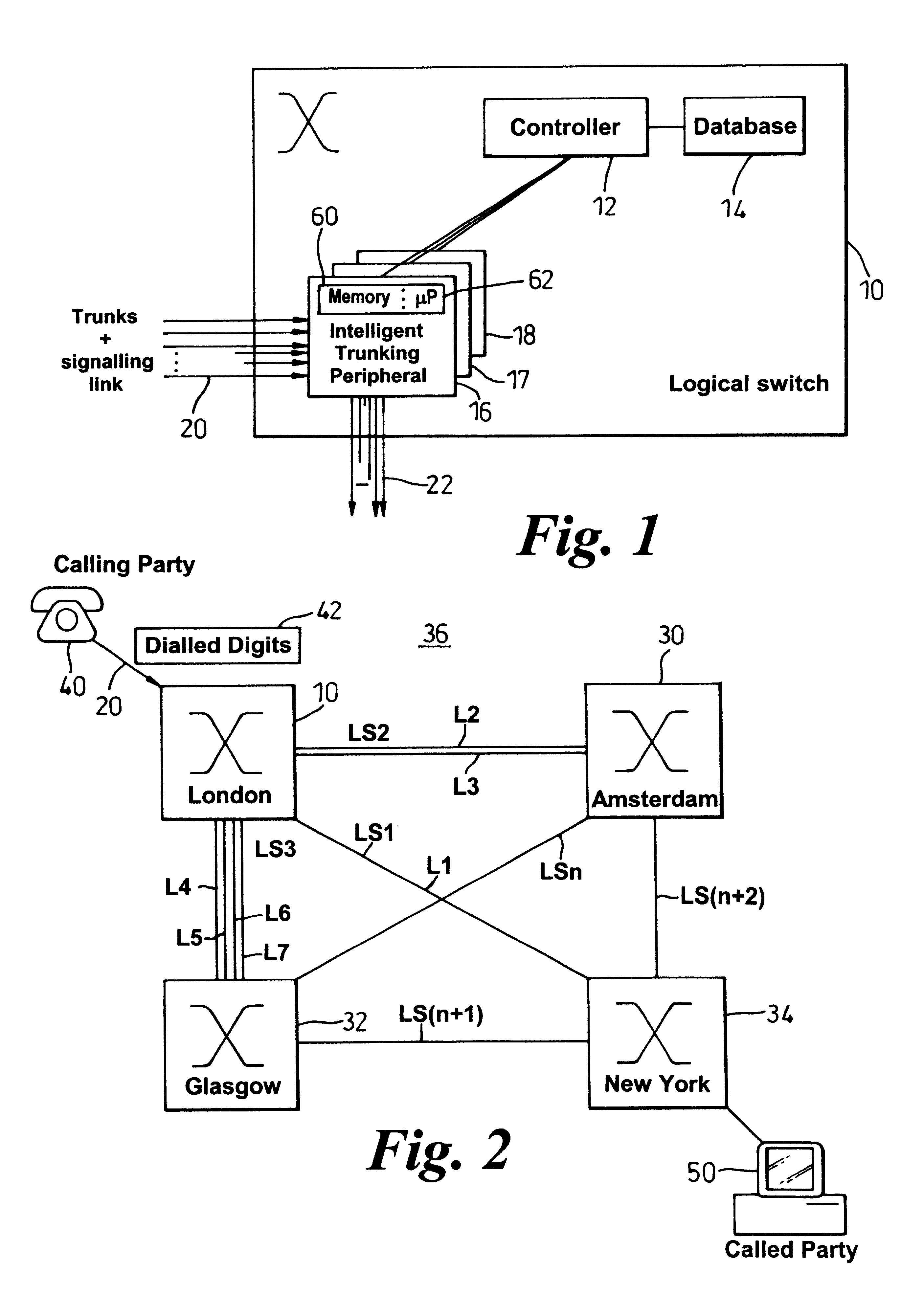Communication system, article and method of configuring and establishing a connection therein
a communication system and communication system technology, applied in the field of communication systems, can solve problems such as messages being lost or sent to the wrong destination, present systems are deficient in their operation, and system operation is compromised
- Summary
- Abstract
- Description
- Claims
- Application Information
AI Technical Summary
Benefits of technology
Problems solved by technology
Method used
Image
Examples
Embodiment Construction
Turning briefly to FIGS. 1 to 3, a typical network architecture and connection topology is shown, which architecture and topology can capable of supporting the concepts of the present invention. Basically, a node (e.g. a logical switch) 10 is shown to contain a controller 12 and associated database 14. The controller is coupled to a plurality of intelligent trunking peripherals 16-18 which themselves terminate incident trunks 20. Communication links 22 provide for interconnection of the node 10 to other nodes 30-34 within the network 36.
The function of equipment within the system and the inter-operation and set up of a call has already been described in considerable detail above, and so for the sake of brevity more elaborate description at this point is superfluous. It is suffice to say that FIG. 2 shows a calling party 40 that has accessed an intelligent trunking peripheral 16 via dialled digits 42 sent over a communication resource, e.g. one of the plurality of incident trunks 20....
PUM
 Login to View More
Login to View More Abstract
Description
Claims
Application Information
 Login to View More
Login to View More - R&D
- Intellectual Property
- Life Sciences
- Materials
- Tech Scout
- Unparalleled Data Quality
- Higher Quality Content
- 60% Fewer Hallucinations
Browse by: Latest US Patents, China's latest patents, Technical Efficacy Thesaurus, Application Domain, Technology Topic, Popular Technical Reports.
© 2025 PatSnap. All rights reserved.Legal|Privacy policy|Modern Slavery Act Transparency Statement|Sitemap|About US| Contact US: help@patsnap.com



